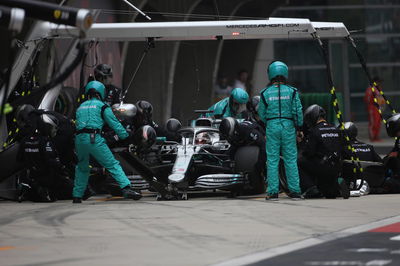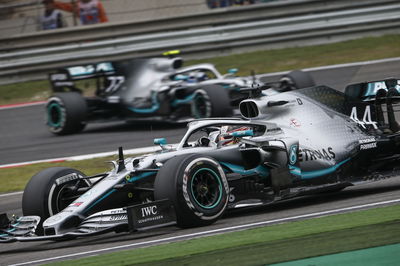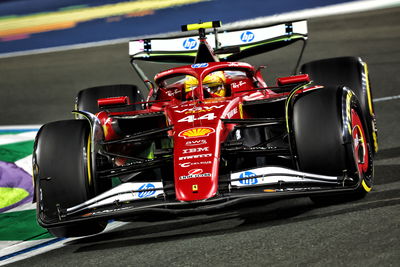Wolff explains Mercedes’ ‘proud’ double-stack pit stop
Mercedes Formula 1 boss Toto Wolff says the team opted to double-stack its drivers during the Chinese Grand Prix as it did not want to “interfere” with the race order.
With Lewis Hamilton comfortably leading F1’s 1000th world championship event from teammate Valtteri Bottas, Mercedes opted to call both of its drivers into the pitlane on Lap 37 of the race as the team switched on to a two-stop strategy after Red Bull had triggered a second round of stops a few laps before.

Mercedes Formula 1 boss Toto Wolff says the team opted to double-stack its drivers during the Chinese Grand Prix as it did not want to “interfere” with the race order.
With Lewis Hamilton comfortably leading F1’s 1000th world championship event from teammate Valtteri Bottas, Mercedes opted to call both of its drivers into the pitlane on Lap 37 of the race as the team switched on to a two-stop strategy after Red Bull had triggered a second round of stops a few laps before.
Wolff said the decision to double-stack was taken in order to cover off the threat of Bottas potentially being undercut by Ferrari’s Sebastian Vettel, who had recently pitted and was lighting up the timesheets on a fresh set of Medium tyres.
“The double-stack was particularly a proud moment because we had everything to lose in P1 and P2 and we were thinking losing the position if we were to pit one of the two earlier and stacking functioned brilliantly,” Wolff told Sky Sports.
Speaking later in a separate media session, Wolff added: “It was an interesting situation because it was clear that Valtteri in that situation was under pressure from Sebastian. So if Sebastian would have stopped, he would have undercut Valtteri.
This pit crew. This double-stack!
— Mercedes-AMG F1 (@MercedesAMGF1) April 14, 2019
THIS TEAM!!
: @F1 pic.twitter.com/uh6Uh3OScw
“The logical choice is to stop Valtteri first. But if we would have stopped Valtteri, he would have undercut Lewis. So we didn’t want to interfere with the order, so that’s why we decided to stack.
“We knew that we were just about to have the gap to stack them properly. We gave the commitment to Valtteri that we wouldn’t lose any time, and it was really impressive how the guys did it.
“It was the choreography for everybody who understands Formula 1 was really impressive. It came so far that even Dieter Zetsche called all the mechanics together and said he hadn’t seen anything like this before, and congratulations.”
Hamilton returned to the circuit in the lead of race, while Bottas emerged in third place behind Charles Leclerc, who was out of sync with the leaders. After being stuck behind the Ferrari driver for nearly two laps, Bottas pulled off a DRS-assisted pass on the run to Turn 14 before sealing Mercedes’ third consecutive one-two finish of 2019.
Wolff added the team was unsure whether a one-stop or two-stop strategy was the right way to go, but said Red Bull’s decision to stop Max Verstappen ultimately set off the chain reaction among the leading three teams.

“Max was the one that in both instances triggered the stops,” Wolff explained. “Nobody was really sure if it would go for a struggling one-stop or be a two-stopper. With Max pitting, Ferrari needed to cover. That was clear sooner or later.
“And we wanted to avoid the undercut by Sebastian, so this is the reason what I explained before. We wanted to make sure that Valtteri wouldn’t lose out of pitting, and Lewis wouldn’t lose out of pitting against Valtteri.
“That’s why the stacking was the only solution, which is an extremely tricky manoeuvre. You don’t get to train that a lot. The first line of attack needs to be out of the way for the second group to put the tyres on.
“How it functioned today, I can only really take my hat off to the mechanics and everyone involved around the stops, and every day in the factory I hear the guns working when they train, and this was harvesting that hard work that thousands of stops they have changed.”












